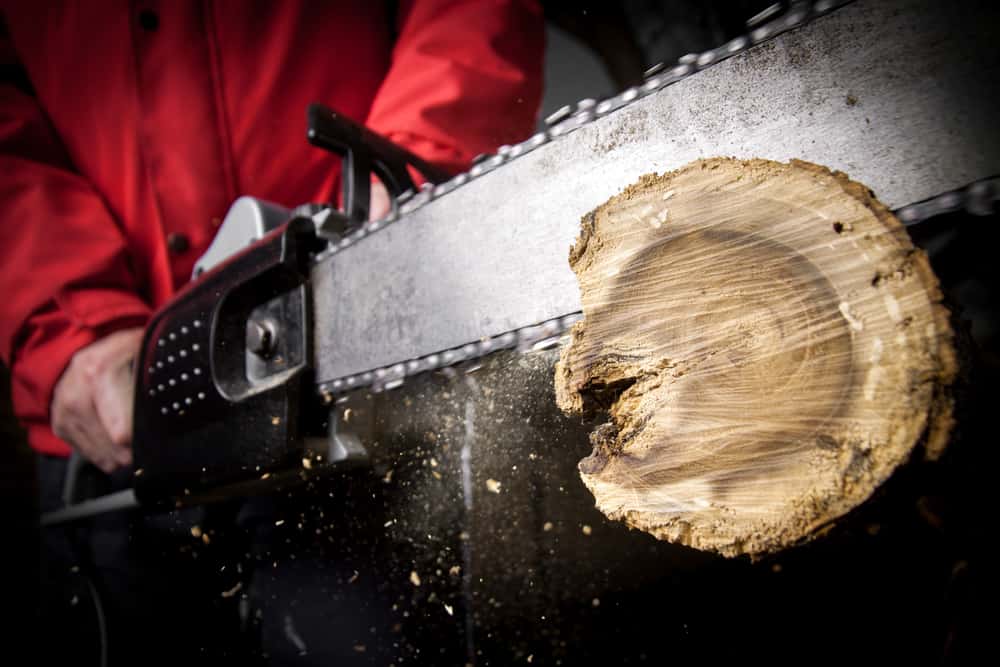
Overview
Recently, I was considering renting a chainsaw to trim one of the trees in my yard. I should say I briefly considered it, until the thought of holding a running chainsaw while perched high on a poorly balanced ladder leaned against a tree, triggered memories of some of the ER patients I have seen injured in such misadventures.
Chainsaws are effective tools when used safely by experienced tradesmen, but potential for severe injury cannot be overstated.
Most chainsaws run their chainblades about 60mph. That means that on the average gas powered saw with a 16-20 inch arm, the blade teeth rotate around the device 20 or so times per second. A severe injury can happen in less than a second.
Chainsaws are effective tools when used safely by experienced tradesmen, but potential for severe injury cannot be overstated.
Most chainsaws run their chainblades about 60mph. That means that on the average gas powered saw with a 16-20 inch arm, the blade teeth rotate around the device 20 or so times per second. A severe injury can happen in less than a second.
Mechanisms of Injury
One of the most common causes of chainsaw injuries are related to kickback. This is when the saw gets pinched by what it is cutting or encounters something very hard. The business end of the saw is then violently thrown back at the operator.
So you can imagine the possible injuries I have seen. When that saw kicks back, it is going to go in the opposite direction – instead of down and forward, it flies up and back … right towards the operator’s face.
It only takes the briefest contact to cut through tissue and even bone. This is likely to be even worse if the operator is cutting a branch overhead or also falls from the tree.
Another phenomenon occurs when the saw is pulled forward, as was the case when a patient was thrown out of a tree when the chain was pinched and stopped by the weight of the branch he was cutting. The sudden violent change in torque caused him to lose balance and fall to the ground.
I have also seen a man sustain a deep laceration on the thigh of his leg when his saw cut through the branch quicker than he expected. Due to momentum, the saw then arched down and cut deeply into his leg.
So you can imagine the possible injuries I have seen. When that saw kicks back, it is going to go in the opposite direction – instead of down and forward, it flies up and back … right towards the operator’s face.
It only takes the briefest contact to cut through tissue and even bone. This is likely to be even worse if the operator is cutting a branch overhead or also falls from the tree.
Another phenomenon occurs when the saw is pulled forward, as was the case when a patient was thrown out of a tree when the chain was pinched and stopped by the weight of the branch he was cutting. The sudden violent change in torque caused him to lose balance and fall to the ground.
I have also seen a man sustain a deep laceration on the thigh of his leg when his saw cut through the branch quicker than he expected. Due to momentum, the saw then arched down and cut deeply into his leg.
Assessment & Treatment Considerations
When dispatched to a chainsaw injury consider that, in addition to deep lacerations, there may be amputations and blunt trauma from falling. Treat life-threatening hemorrhage immediately if present, and treat for shock. Mangled body parts and amputations can be distracting.
Remember to take C-spine precautions if there is a possibility of C-spine injury, and complete a secondary looking for other injuries. Rinse amputations with sterile water then wrap in dry sterile gauze, place in a bag, and put bag on ice for transport with patient. Do not put amputations directly on ice or ice water.
Remember to take C-spine precautions if there is a possibility of C-spine injury, and complete a secondary looking for other injuries. Rinse amputations with sterile water then wrap in dry sterile gauze, place in a bag, and put bag on ice for transport with patient. Do not put amputations directly on ice or ice water.


